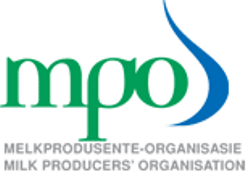
MPO FLASH 4/09 July 2021
Market feedback from downstream role players (i.e. unprocessed milk buyers and retailers) regarding the lower production of unprocessed milk in May 2021 (−3,38%) was that they are pleased that production is lower and that they are also of the view that the market will be flooded come spring. (Note: The May percentage is preliminary and could change in the next two months.)
The reason for the joyous mood from the downstream role players regarding the lower production of unprocessed milk is that the demand for dairy is down.
The dairy industry is regarded as a market-orientated industry and more explicitly as a demand-driven industry. The tertiary industry (retailers) receives signals from consumers (e.g. “buy less”) that are passed on to the secondary industry (milk buyers), who pass the signal on to the primary industry (farmers). The signal is normally a price change, but it is more complex than that due to the phenomenon called price transmission. There are different types of price transmissions, e.g. asymmetric price transmission, where downstream prices react in a different manner from upstream prices. Let’s park that by saying it is a dynamic process and not as simple as one would think.
Getting back to the feedback from the market, it is clear that the message is that demand for dairy products is down. It is important to note that the primary industry determines whether supply is market-orientated, i.e. in sync with demand. The reaction from the downstream role players regarding the lower unprocessed milk production in May is a clear message to milk farmers: Do not chase milk production or you will have to face the consequences.
Milk farmers are not solely responsible for the supply side; imports are the other source of supply. Since the clear message from the market is that demand is down, one would expect importers to heed this message. After all, imports are much more controllable than production. Imports for the first five months of 2021, on a volume basis (kg), were 19% more than for the same period in 2020. The major contributors were UHT processed milk, which was 240% more than last year and whey, which was 37% more. Imports for the first five months of 2021, on a volume basis (kg), were 8% more than for the same period in 2019. The major contributors were 87% more milk powder and 25% more whey.
This obviously leaves one perturbed – are importers receiving the same message as farmers?
The MPO will endeavour to arrange meetings with the downstream role players and Milk SA to discuss this issue, which could indicate some degree of market failure, and propose remedial action.
Nevertheless, it would be prudent for milk farmers not to milk because they can milk, but rather to milk for an adequate margin and to pay attention to feedback from the market, where the message is that the market requires less milk than last year.
Bertus van Heerden
Chief economist, MPO
Published on Friday, 9th July 2021 - 16:29
Recent Posts
disclaimer









